In 2012 there were almost half a million people aged 90+ living in England and Wales. They might only represent about 1% of the total population, but given that the number has increased 33% since 2002, they're likely to become a bigger part of Britain.
But a lot of people pass away between their 90th and 100th birthdays - the totals plummet from 453,000 people aged 90-99 to just 12,320 aged 100+.
The AK-47 at 60 (July 13, 2007)
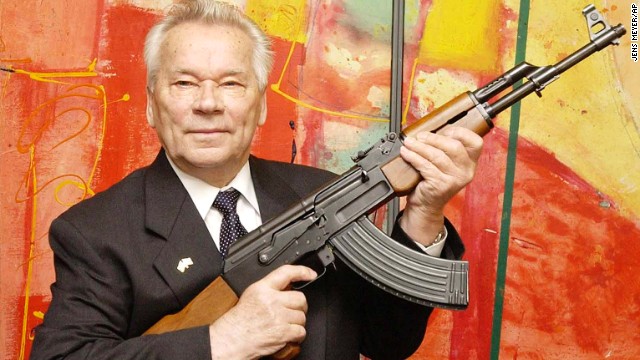 Russian weapons designer Mikhail Kalashnikov presents his legendary assault rifle, the AK-47, to the media while opening an exhibition of his work at a weapons museum in Suhl, Germany, in 2002. Kalashnikov died on December 23 at the age of 94. Click through to see where else in the world the AK-47 has appeared.
A soldier in the anti-government army of the Sudan holds his AK-47 rifle at the ready in 1971.
A diver retrieves an AK-47 from the bottom of the Suez Canal in Egypt in 1975.
Fighters with the Eritrean People's Liberation Front sit with their rifles in 1978.
Iranian Revolutionary Guard Corps members assemble during a commemoration of their foundation in Tehran in 1981.
A Shiite Muslim militiaman fires his AK-47 during a battle in West Beirut, Lebanon, in 1987.
A Russian sailor stands guard with an AK-47 in Moscow during a visit from then-U.S. President Ronald Reagan in 1988.
An anti-Communist civilian fighter runs with an AK-47 during a street-fight in Bucharest, Romania, in 1989.
Then-Iraqi President Saddam Hussein brandishes an AK-47 during his visit to villages in northern Iraq in 1998, in this Iraqi News Agency released photograph.
Osama bin Laden fires an AK-47 in this still frame from the infamous video of him released after September 11, 2001.
A soldier with the Liberation Army of Presevo, Medvedja and Bujanovac guards his position near the village of Shoshaj, Yugoslavia, in 2001.
A soldier stands guard at the entrance to a sanctuary for Kim Jong Il in Myohyangsan, North Korea, in 2005.
A man guards the the village of Jebel Shugruf in the Haraz Mountains of Yemen in 2006.
A Pakistani tribesman carries an AK-47 assault rifle after an air strike in Damadola, Pakistan, in 2006.
An Iraqi policewoman receives guidance firing an AK-47 during target practice in Karbala, Iraq, in 2008.
Members of the Karo Tribe pose with AK-47s in Korcho, Ethiopia, in 2008.
Kenyan policemen confront demonstrators during post-election clashes in the Mathare slums of Nairobi in 2008.
Newly recruited Rangers practice with their AK-47s during a training session at a military camp in the southern Narathiwat province of Thailand in 2009.
An AK-47 leans against a makeshift bench press that U.S. Marines built in their base in Delaram, Afghanistan, in 2009.
A man shoots an AK-47 at a shooting range in West Point, Kentucky, in 2009.
Anti-Libyan-government militants gather on the front line in Brega, Libya, in 2011.
A Syrian opposition fighter poses with his AK-47 in Aleppo, Syria, in 2012.
A soldier with the Malian army patrols a street in Gao, Mali, with an AK-47 on February 25, 2013.
The long arm of Kalashnikov's AK-47
HIDE CAPTION
Russian weapons designer Mikhail Kalashnikov presents his legendary assault rifle, the AK-47, to the media while opening an exhibition of his work at a weapons museum in Suhl, Germany, in 2002. Kalashnikov died on December 23 at the age of 94. Click through to see where else in the world the AK-47 has appeared.
A soldier in the anti-government army of the Sudan holds his AK-47 rifle at the ready in 1971.
A diver retrieves an AK-47 from the bottom of the Suez Canal in Egypt in 1975.
Fighters with the Eritrean People's Liberation Front sit with their rifles in 1978.
Iranian Revolutionary Guard Corps members assemble during a commemoration of their foundation in Tehran in 1981.
A Shiite Muslim militiaman fires his AK-47 during a battle in West Beirut, Lebanon, in 1987.
A Russian sailor stands guard with an AK-47 in Moscow during a visit from then-U.S. President Ronald Reagan in 1988.
An anti-Communist civilian fighter runs with an AK-47 during a street-fight in Bucharest, Romania, in 1989.
Then-Iraqi President Saddam Hussein brandishes an AK-47 during his visit to villages in northern Iraq in 1998, in this Iraqi News Agency released photograph.
Osama bin Laden fires an AK-47 in this still frame from the infamous video of him released after September 11, 2001.
A soldier with the Liberation Army of Presevo, Medvedja and Bujanovac guards his position near the village of Shoshaj, Yugoslavia, in 2001.
A soldier stands guard at the entrance to a sanctuary for Kim Jong Il in Myohyangsan, North Korea, in 2005.
A man guards the the village of Jebel Shugruf in the Haraz Mountains of Yemen in 2006.
A Pakistani tribesman carries an AK-47 assault rifle after an air strike in Damadola, Pakistan, in 2006.
An Iraqi policewoman receives guidance firing an AK-47 during target practice in Karbala, Iraq, in 2008.
Members of the Karo Tribe pose with AK-47s in Korcho, Ethiopia, in 2008.
Kenyan policemen confront demonstrators during post-election clashes in the Mathare slums of Nairobi in 2008.
Newly recruited Rangers practice with their AK-47s during a training session at a military camp in the southern Narathiwat province of Thailand in 2009.
An AK-47 leans against a makeshift bench press that U.S. Marines built in their base in Delaram, Afghanistan, in 2009.
A man shoots an AK-47 at a shooting range in West Point, Kentucky, in 2009.
Anti-Libyan-government militants gather on the front line in Brega, Libya, in 2011.
A Syrian opposition fighter poses with his AK-47 in Aleppo, Syria, in 2012.
A soldier with the Malian army patrols a street in Gao, Mali, with an AK-47 on February 25, 2013.
The long arm of Kalashnikov's AK-47
HIDE CAPTION
A soldier in the anti-government army of the Sudan holds his AK-47 rifle at the ready in 1971.
A diver retrieves an AK-47 from the bottom of the Suez Canal in Egypt in 1975.
Fighters with the Eritrean People's Liberation Front sit with their rifles in 1978.
Iranian Revolutionary Guard Corps members assemble during a commemoration of their foundation in Tehran in 1981.
A Shiite Muslim militiaman fires his AK-47 during a battle in West Beirut, Lebanon, in 1987.
A Russian sailor stands guard with an AK-47 in Moscow during a visit from then-U.S. President Ronald Reagan in 1988.
An anti-Communist civilian fighter runs with an AK-47 during a street-fight in Bucharest, Romania, in 1989.
Then-Iraqi President Saddam Hussein brandishes an AK-47 during his visit to villages in northern Iraq in 1998, in this Iraqi News Agency released photograph.
Osama bin Laden fires an AK-47 in this still frame from the infamous video of him released after September 11, 2001.
A soldier with the Liberation Army of Presevo, Medvedja and Bujanovac guards his position near the village of Shoshaj, Yugoslavia, in 2001.
A soldier stands guard at the entrance to a sanctuary for Kim Jong Il in Myohyangsan, North Korea, in 2005.
A man guards the the village of Jebel Shugruf in the Haraz Mountains of Yemen in 2006.
A Pakistani tribesman carries an AK-47 assault rifle after an air strike in Damadola, Pakistan, in 2006.
An Iraqi policewoman receives guidance firing an AK-47 during target practice in Karbala, Iraq, in 2008.
Members of the Karo Tribe pose with AK-47s in Korcho, Ethiopia, in 2008.
Kenyan policemen confront demonstrators during post-election clashes in the Mathare slums of Nairobi in 2008.
Newly recruited Rangers practice with their AK-47s during a training session at a military camp in the southern Narathiwat province of Thailand in 2009.
An AK-47 leans against a makeshift bench press that U.S. Marines built in their base in Delaram, Afghanistan, in 2009.
A man shoots an AK-47 at a shooting range in West Point, Kentucky, in 2009.
Anti-Libyan-government militants gather on the front line in Brega, Libya, in 2011.
A Syrian opposition fighter poses with his AK-47 in Aleppo, Syria, in 2012.
A soldier with the Malian army patrols a street in Gao, Mali, with an AK-47 on February 25, 2013.
The long arm of Kalashnikov's AK-47
HIDE CAPTION



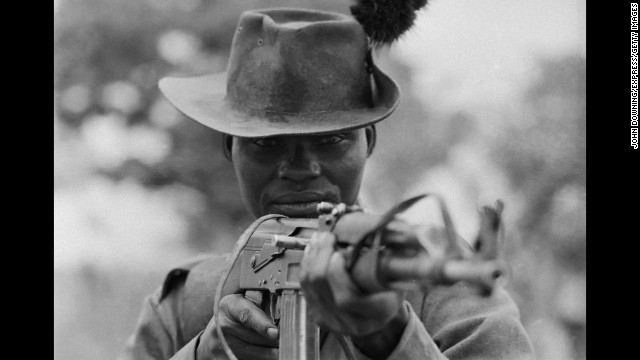 A soldier in the anti-government army of the Sudan holds his AK-47 rifle at the ready in 1971.
A soldier in the anti-government army of the Sudan holds his AK-47 rifle at the ready in 1971.
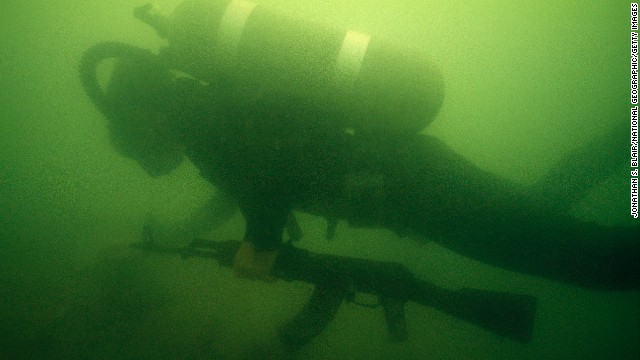 A diver retrieves an AK-47 from the bottom of the Suez Canal in Egypt in 1975.
A diver retrieves an AK-47 from the bottom of the Suez Canal in Egypt in 1975.
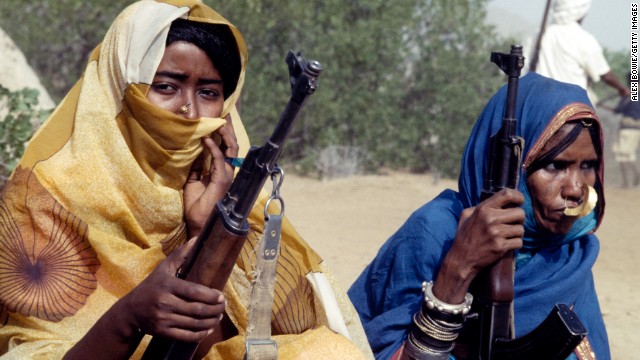 Fighters with the Eritrean People's Liberation Front sit with their rifles in 1978.
Fighters with the Eritrean People's Liberation Front sit with their rifles in 1978.
 Iranian Revolutionary Guard Corps members assemble during a commemoration of their foundation in Tehran in 1981.
Iranian Revolutionary Guard Corps members assemble during a commemoration of their foundation in Tehran in 1981.
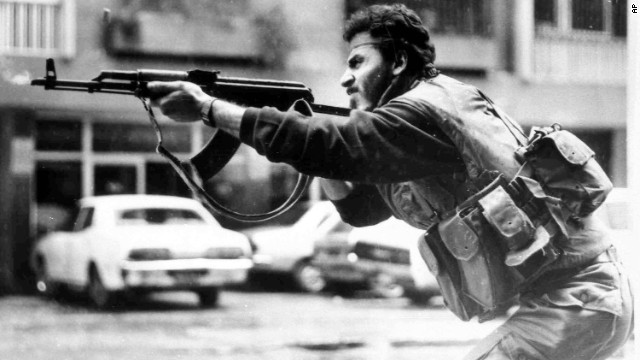 A Shiite Muslim militiaman fires his AK-47 during a battle in West Beirut, Lebanon, in 1987.
A Shiite Muslim militiaman fires his AK-47 during a battle in West Beirut, Lebanon, in 1987.
 A Russian sailor stands guard with an AK-47 in Moscow during a visit from then-U.S. President Ronald Reagan in 1988.
A Russian sailor stands guard with an AK-47 in Moscow during a visit from then-U.S. President Ronald Reagan in 1988.
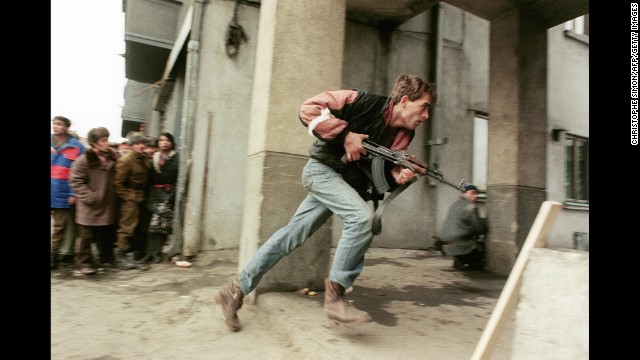 An anti-Communist civilian fighter runs with an AK-47 during a street-fight in Bucharest, Romania, in 1989.
An anti-Communist civilian fighter runs with an AK-47 during a street-fight in Bucharest, Romania, in 1989.
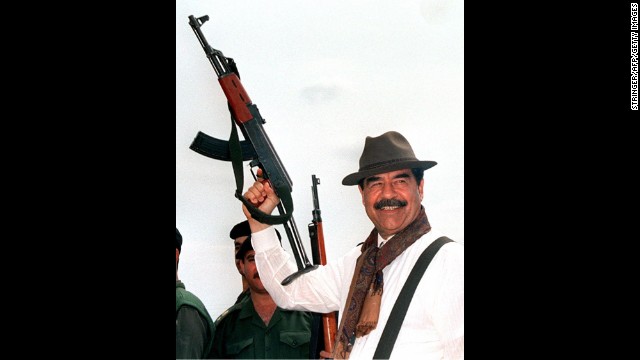 Then-Iraqi President Saddam Hussein brandishes an AK-47 during his visit to villages in northern Iraq in 1998, in this Iraqi News Agency released photograph.
Then-Iraqi President Saddam Hussein brandishes an AK-47 during his visit to villages in northern Iraq in 1998, in this Iraqi News Agency released photograph.
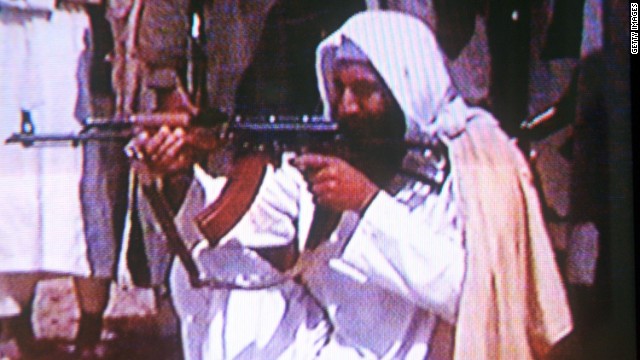 Osama bin Laden fires an AK-47 in this still frame from the infamous video of him released after September 11, 2001.
Osama bin Laden fires an AK-47 in this still frame from the infamous video of him released after September 11, 2001.
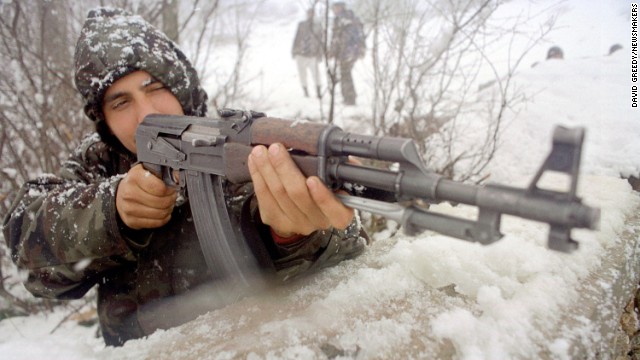 A soldier with the Liberation Army of Presevo, Medvedja and Bujanovac guards his position near the village of Shoshaj, Yugoslavia, in 2001.
A soldier with the Liberation Army of Presevo, Medvedja and Bujanovac guards his position near the village of Shoshaj, Yugoslavia, in 2001.
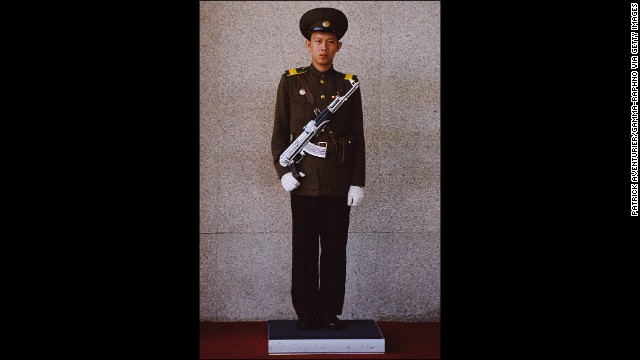 A soldier stands guard at the entrance to a sanctuary for Kim Jong Il in Myohyangsan, North Korea, in 2005.
A soldier stands guard at the entrance to a sanctuary for Kim Jong Il in Myohyangsan, North Korea, in 2005.
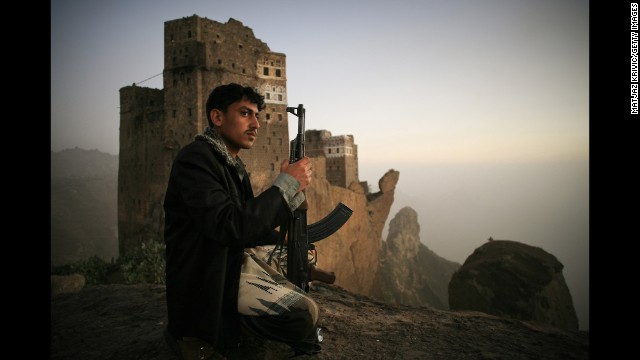 A man guards the the village of Jebel Shugruf in the Haraz Mountains of Yemen in 2006.
A man guards the the village of Jebel Shugruf in the Haraz Mountains of Yemen in 2006.
 A Pakistani tribesman carries an AK-47 assault rifle after an air strike in Damadola, Pakistan, in 2006.
A Pakistani tribesman carries an AK-47 assault rifle after an air strike in Damadola, Pakistan, in 2006.
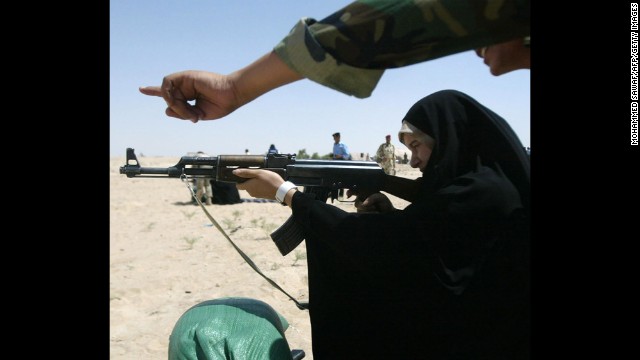 An Iraqi policewoman receives guidance firing an AK-47 during target practice in Karbala, Iraq, in 2008.
An Iraqi policewoman receives guidance firing an AK-47 during target practice in Karbala, Iraq, in 2008.
 Members of the Karo Tribe pose with AK-47s in Korcho, Ethiopia, in 2008.
Members of the Karo Tribe pose with AK-47s in Korcho, Ethiopia, in 2008.
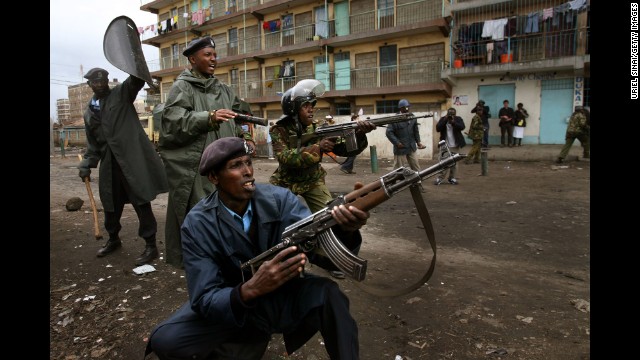 Kenyan policemen confront demonstrators during post-election clashes in the Mathare slums of Nairobi in 2008.
Kenyan policemen confront demonstrators during post-election clashes in the Mathare slums of Nairobi in 2008.
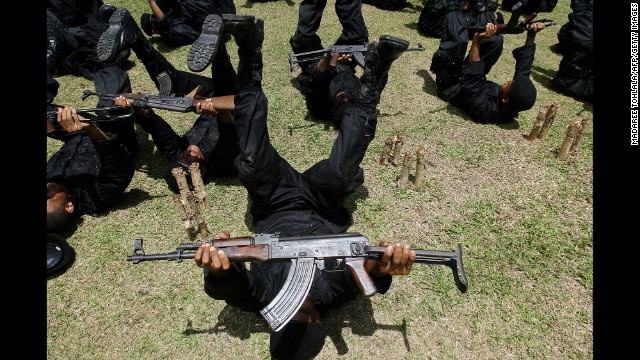 Newly recruited Rangers practice with their AK-47s during a training session at a military camp in the southern Narathiwat province of Thailand in 2009.
Newly recruited Rangers practice with their AK-47s during a training session at a military camp in the southern Narathiwat province of Thailand in 2009.
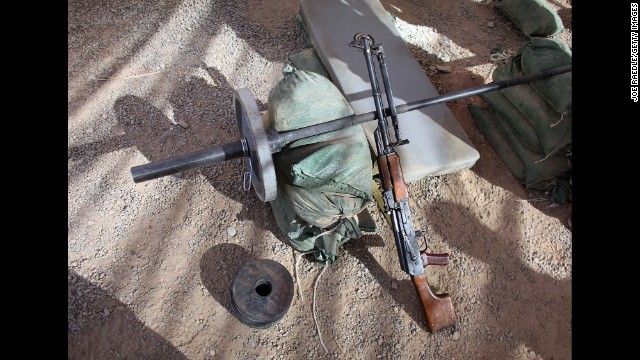 An AK-47 leans against a makeshift bench press that U.S. Marines built in their base in Delaram, Afghanistan, in 2009.
An AK-47 leans against a makeshift bench press that U.S. Marines built in their base in Delaram, Afghanistan, in 2009.
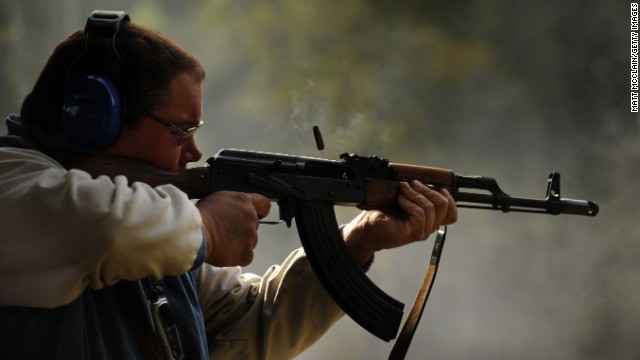 A man shoots an AK-47 at a shooting range in West Point, Kentucky, in 2009.
A man shoots an AK-47 at a shooting range in West Point, Kentucky, in 2009.
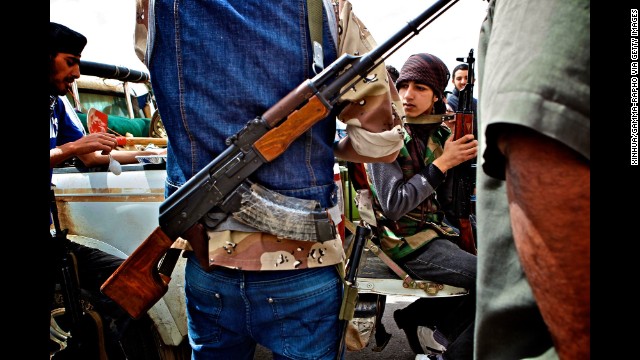 Anti-Libyan-government militants gather on the front line in Brega, Libya, in 2011.
Anti-Libyan-government militants gather on the front line in Brega, Libya, in 2011.
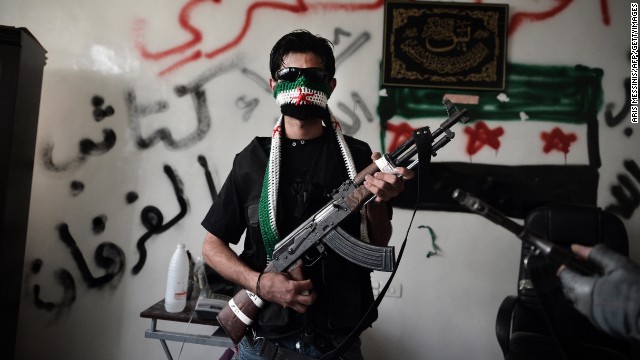 A Syrian opposition fighter poses with his AK-47 in Aleppo, Syria, in 2012.
A Syrian opposition fighter poses with his AK-47 in Aleppo, Syria, in 2012.
 A soldier with the Malian army patrols a street in Gao, Mali, with an AK-47 on February 25, 2013.
A soldier with the Malian army patrols a street in Gao, Mali, with an AK-47 on February 25, 2013.























